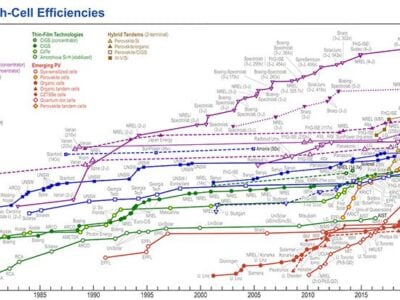
Will ST eventually sell its R3 wafer fab to Tower?
But the invitation from ST for Tower to occupy a third of the cleanroom (see ST, Tower agree to share 300mm analog, power fab) raises questions about how long the arrangement is contracted to last, and what happens if and when ST wants to reclaim the rest of its cleanroom.
The R3 wafer fab is somewhat late in arriving. It was previously expected to receive chip making equipment in 2020 with volume production starting in 2021. When it was first billed in January 2019 it was described as an R&D pilot line for power technologies that would be capable of expansion to volume production on demand. At the time Chery said: “This new fab is designed to be expandable, of course, according to demand, to start volume production starting from 2021. It will be focused on supporting our growth ambitions and leadership in BCD, IGBT and power technologies.”
Well since then we have had a year of global pandemic but demand for semiconductor components has increased. Which may tell most of the story. ST may have touched the brake on R3 and now wishes to get up to maximum output as quickly as possible. ST has also been pushing hard on developing its own capabilities in two power semiconductor processes – silicon-carbide and gallium-nitride on silicon. The GaN-on-silicon development is focused at a 200mm wafer fab in Tours, France. This may leave silicon-based power, including BCD and vanilla IGBT, looking somewhat mature.
And partnering with specialty foundry is an interesting choice, especially one that is proficient in analog, power and MEMS and regularly expands by seeking facilities, legacy processes to adopt and legacy contracts to fulfil.
Next: How long?
Tower must have a time-based contract allowing it to install equipment and manufacture within R3. I would think that three-years would be the minimum to make the effort of moving in worthwhile. But what happens then? And what state will the semiconductor market be in?
ST’s policy of record is to embrace manufacturing where technology can provide differentiation from the competition, but to go fabless where differentiation by design is sufficient and the appropriate manufacturing processes are common and readily available within foundries. Up until now that has drawn a fairly straight line down through ST’s product portfolio with analog, mixed-signal, RF, MEMS and power semiconductors on one side and high-performance digital on the other.
For the first category, including some special qualification, ‘more-than-moore’ circuits such as automotive microcontrollers, ST believes in the integrated device manufacturer (IDM) business model. For the second category, the purer digital circuits ST believes in being fabless and not tying its capital up in owning the means of production.
But that line may not always fall in the same place. Are there mature analog and power semiconductor components on mature processes that remain good sellers into automotive, industrial and some consumer applications? It is notable that the two companies talked about ramping 130, 90 and 65nm processes for smart power, analog and mixed-signal and RF processes first, but did not discuss whether these would be ST processes or Tower processes, or whether any or all are interchangeable.
Next: Three options
Whenever the tenancy contract with Tower expires, one of three things can happen. One possibility is that the two parties will agree that things worked pretty well and can continue on more or less the same footing.
The second is that ST will say “thanks for the rent you’ve paid but it’s time for you to go,” and presumably Tower will have had time to find another 300mm wafer fab to inhabit. But such jumping in out of fabs, moving equipment and personnel, is surely not ideal for Tower. It is notable that Tower is forming an Italian subsidiary to look after its interest, which also suggests long-term ambitions for Tower to be there.
The third is that ST will allow Tower to buy the fab and provide the foundry with a multi-year contract for Tower to make certain analog and power semiconductors using its own manufacturing processes. Meanwhile ST will focus on silicon-carbide and GaN-on-Si for power where it may feel it can differentiate itself and compete.
It may be that Jean-Marc Chery does not yet know himself how things will play out and getting Tower involved is a convenient way for both companies to rapidly try and meet the current surplus demand. This agreement could be a sort of “first date” that could lead on to more intimate relations between the two companies. Of course how the two companies choose to behave more generally and with regard to R3 in three years’ time, may depend on the semiconductor oversupply situation that may well exist by then.
Related links and articles:
News articles:
ST, Tower agree to share 300mm analog, power fab
ST starts construction of 300mm wafer fab
Tower to expand manufacturing in Israel, Japan and US
Report: Tower set to pay hackers to regain control
ST sales boom on strong demand, hits $12bn run-rate
ST to take over majority of GaN company Exagan
 If you enjoyed this article, you will like the following ones: don't miss them by subscribing to :
eeNews on Google News
If you enjoyed this article, you will like the following ones: don't miss them by subscribing to :
eeNews on Google News




